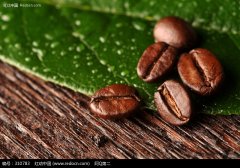Intense aromas of strawberry, citrus, peach and jasmine with Ethiopian Yega Chefe coffee flavor
Ethiopia is the oldest coffee producer. With Ethiopian beans, you can measure the flavor profile of all current coffee beans. It can be said that Ethiopia is the gene pool of coffee and the source of all flavors. Nothing is more common in Ethiopia than the coffee beans treated by the ancient method of sun treatment, which is caused by Ethiopia's lack of water, but the ancient method of sun exposure is difficult to control, the quality of farmers' work is also poor, and the taste of potions, onions and tofu is unpleasant. But if handled properly, the strong fruit flavor, fermented wine will make people love to death. Hell and heaven, in a moment.
In 1959, the Yega snow coffee producing area began to try the water washing method. After 1970, the jasmine fragrance of Yega was washed, and the lemon and citrus flavor was popular in Europe and America. It became a model of fine beans in Africa, and the sun treatment was gradually drifting away from Shifei.
However, there are always people who will miss the feeling of the wonderful wine in the sun, which was improved in 2006. In the second Gold Co-operative Coffee Competition held in Ethiopia, sun beans dominated the top three, killing and washing Yega.
Today, the exquisite method of tanning is becoming more and more mature. High standard elimination of bad coffee beans, reduce pollution sources, elevated net bed, special guard, uniform drying. Rich aromas of strawberries, citrus, peach and jasmine, red wine has become popular all the way up to now perhaps one of the most familiar words among coffee lovers.
The birthplace of coffee-the representative work of Ethiopia, Yega Xuefei.
A small town under Sidamo province, a boutique producing area. With its unique fruit flavor, thousands of coffee fans are fascinated by sweet and sour feelings.
On the way to coffee, if you haven't had Yega Snow Coffee, then you haven't set out yet.

Important Notice :
前街咖啡 FrontStreet Coffee has moved to new addredd:
FrontStreet Coffee Address: 315,Donghua East Road,GuangZhou
Tel:020 38364473
- Prev

Light green, small beans in the sun Sidama flavor introduction
The taste of Sidama in the sun is close to the smell of flowers, but it is about a little earthy. Water washing has a nutty fruit aroma with a slight cocoa aroma, but what the two have in common is smooth taste and viscosity, comfortable and pleasant acidity and fragrance. Light or medium roasting is suitable for individual products, while medium or deep roasting is suitable for blending coffee and good Espresso base. The water-washed Sidamo is light green and the beans are small.
- Next

Boutique Coffee-Sumatra Manning (Sumatran Mandheling)
The famous producers of Asian coffee are the islands of the Malay Archipelago: Sumatra, Java, Kalimantan (formerly known as Borneo in Borneo), Sulawesi and New Guinea. The history of coffee cultivation in Sumatra began in the 18th century, and the name Mantenin
Related
- Does Rose Summer choose Blue, Green or Red? Detailed explanation of Rose Summer Coffee plots and Classification in Panamanian Jade Manor
- What is the difference between the origin, producing area, processing plant, cooperative and manor of coffee beans?
- How fine does the espresso powder fit? how to grind the espresso?
- Sca coffee roasting degree color card coffee roasting degree 8 roasting color values what do you mean?
- The practice of lattes: how to make lattes at home
- Introduction to Indonesian Fine Coffee beans-- Java Coffee producing area of Indonesian Arabica Coffee
- How much will the flavor of light and medium roasted rose summer be expressed? What baking level is rose summer suitable for?
- Introduction to the characteristics of washing, sun-drying or wet-planing coffee commonly used in Mantenin, Indonesia
- Price characteristics of Arabica Coffee Bean Starbucks introduction to Manning Coffee Bean Taste producing area Variety Manor
- What is the authentic Yega flavor? What are the flavor characteristics of the really excellent Yejasuffi coffee beans?

